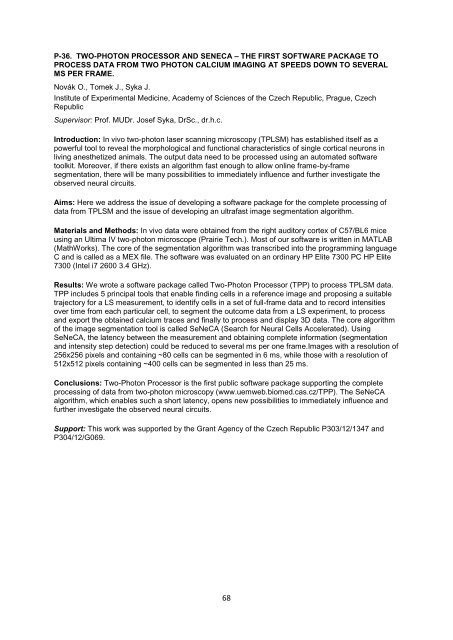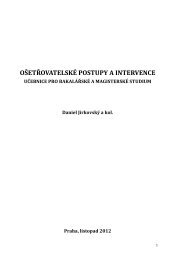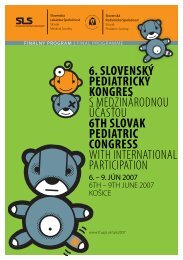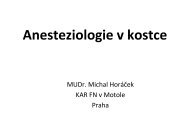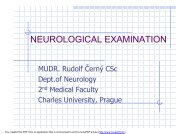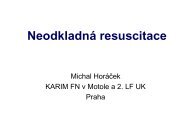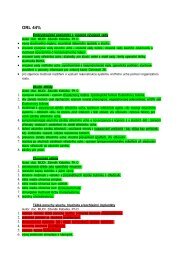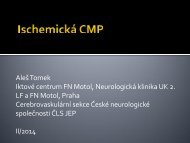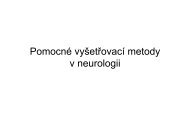Zde - 2. lékařská fakulta - Univerzita Karlova
Zde - 2. lékařská fakulta - Univerzita Karlova
Zde - 2. lékařská fakulta - Univerzita Karlova
Create successful ePaper yourself
Turn your PDF publications into a flip-book with our unique Google optimized e-Paper software.
P-36. TWO-PHOTON PROCESSOR AND SENECA – THE FIRST SOFTWARE PACKAGE TOPROCESS DATA FROM TWO PHOTON CALCIUM IMAGING AT SPEEDS DOWN TO SEVERALMS PER FRAME.Novák O., Tomek J., Syka J.Institute of Experimental Medicine, Academy of Sciences of the Czech Republic, Prague, CzechRepublicSupervisor: Prof. MUDr. Josef Syka, DrSc., dr.h.c.Introduction: In vivo two-photon laser scanning microscopy (TPLSM) has established itself as apowerful tool to reveal the morphological and functional characteristics of single cortical neurons inliving anesthetized animals. The output data need to be processed using an automated softwaretoolkit. Moreover, if there exists an algorithm fast enough to allow online frame-by-framesegmentation, there will be many possibilities to immediately influence and further investigate theobserved neural circuits.Aims: Here we address the issue of developing a software package for the complete processing ofdata from TPLSM and the issue of developing an ultrafast image segmentation algorithm.Materials and Methods: In vivo data were obtained from the right auditory cortex of C57/BL6 miceusing an Ultima IV two-photon microscope (Prairie Tech.). Most of our software is written in MATLAB(MathWorks). The core of the segmentation algorithm was transcribed into the programming languageC and is called as a MEX file. The software was evaluated on an ordinary HP Elite 7300 PC HP Elite7300 (Intel i7 2600 3.4 GHz).Results: We wrote a software package called Two-Photon Processor (TPP) to process TPLSM data.TPP includes 5 principal tools that enable finding cells in a reference image and proposing a suitabletrajectory for a LS measurement, to identify cells in a set of full-frame data and to record intensitiesover time from each particular cell, to segment the outcome data from a LS experiment, to processand export the obtained calcium traces and finally to process and display 3D data. The core algorithmof the image segmentation tool is called SeNeCA (Search for Neural Cells Accelerated). UsingSeNeCA, the latency between the measurement and obtaining complete information (segmentationand intensity step detection) could be reduced to several ms per one frame.Images with a resolution of256x256 pixels and containing ~80 cells can be segmented in 6 ms, while those with a resolution of512x512 pixels containing ~400 cells can be segmented in less than 25 ms.Conclusions: Two-Photon Processor is the first public software package supporting the completeprocessing of data from two-photon microscopy (www.uemweb.biomed.cas.cz/TPP). The SeNeCAalgorithm, which enables such a short latency, opens new possibilities to immediately influence andfurther investigate the observed neural circuits.Support: This work was supported by the Grant Agency of the Czech Republic P303/12/1347 andP304/12/G069.68


